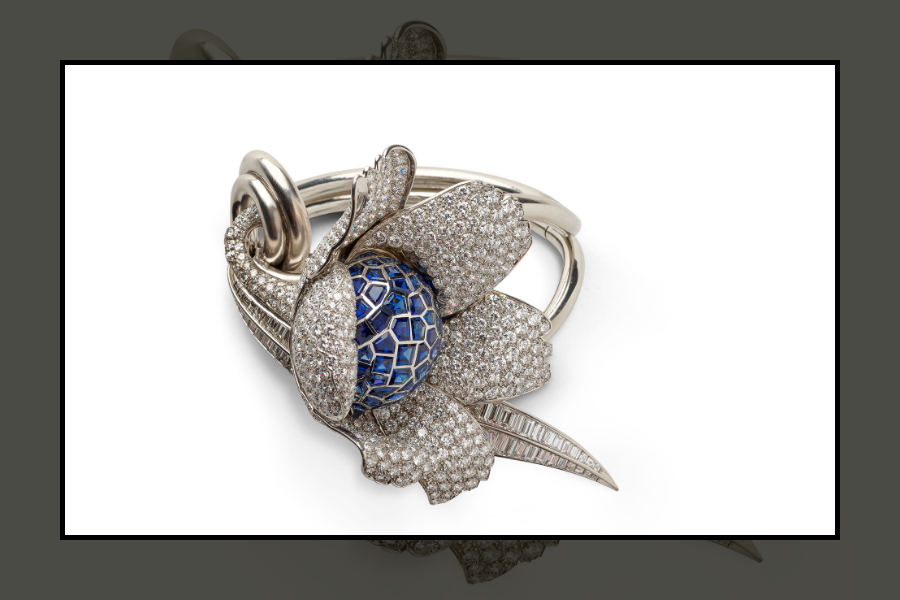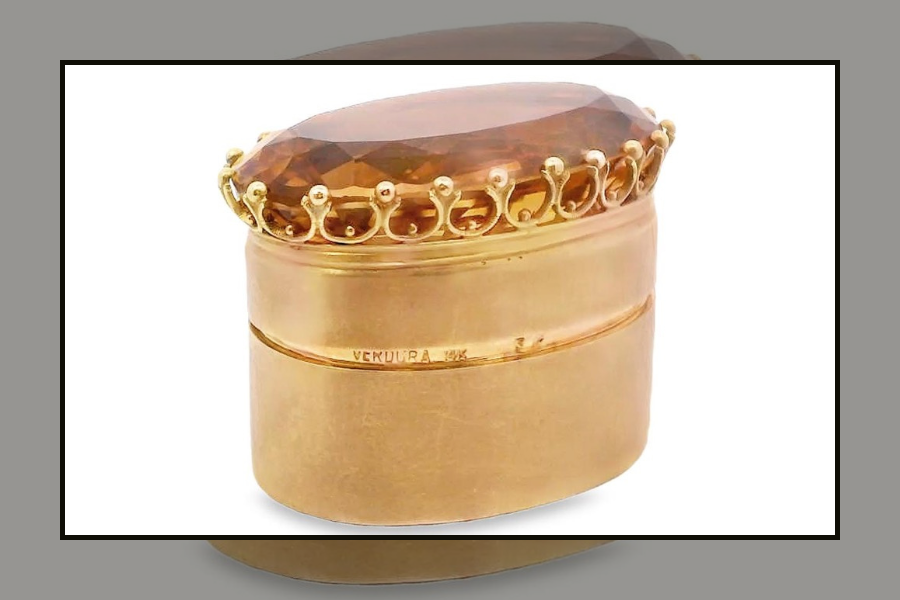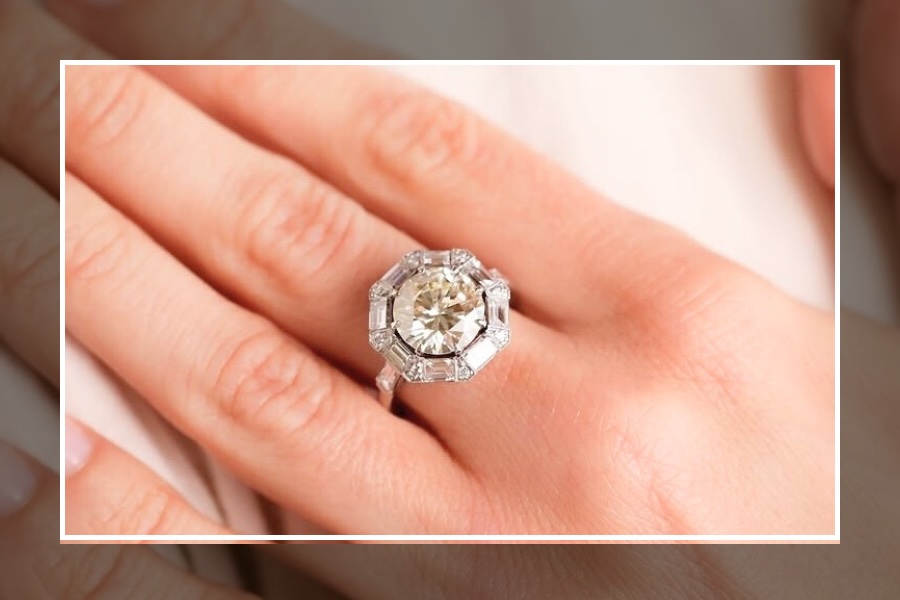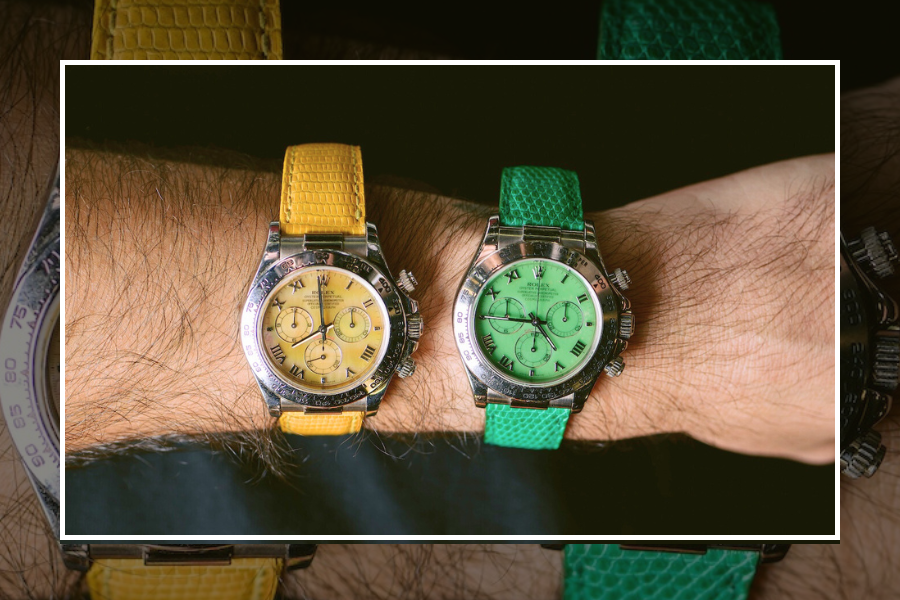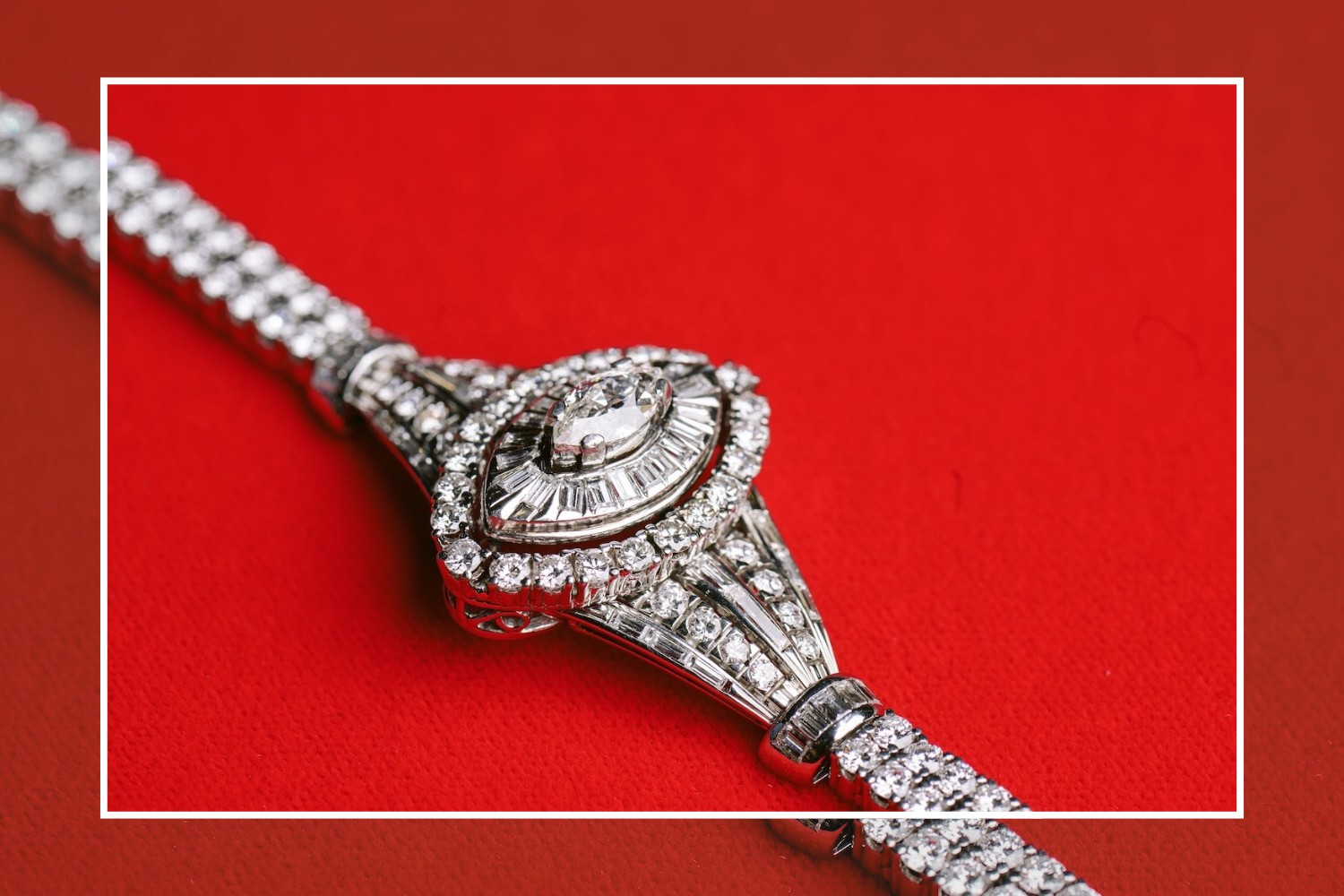Almost one hundred years ago, in 1929, when Duke Fulco di Verdura was ready to make his mark on the world, he threw a costume party. Fortunately, he had a venue: his ancestral home, Palazzo Verdura in Palermo, Italy. And he had a budget: the very last of his inheritance. Risky? Sure. But impossibly charming? Definitely.
Attended by his friends Coco Chanel, Linda and Cole Porter, Elsa Maxwell, and European royalty aplenty, the ball was a smashing success. A man of impeccable manners, wit and charm, highly educated and fluent in both poetry and paintings, he proved once and for all his ability to seduce high society.
It was this ability to move amongst and speak to the richest people in the world that enabled Verdura to flourish as a jewelry designer. Working first for Coco Chanel, he was hired to design textiles but, after remaking some of Chanel’s personal gemstones, she reassigned him to design jewelry. With Coco as his muse, he created one of his most iconic designs early in his career: The Maltese Cross Cuffs.
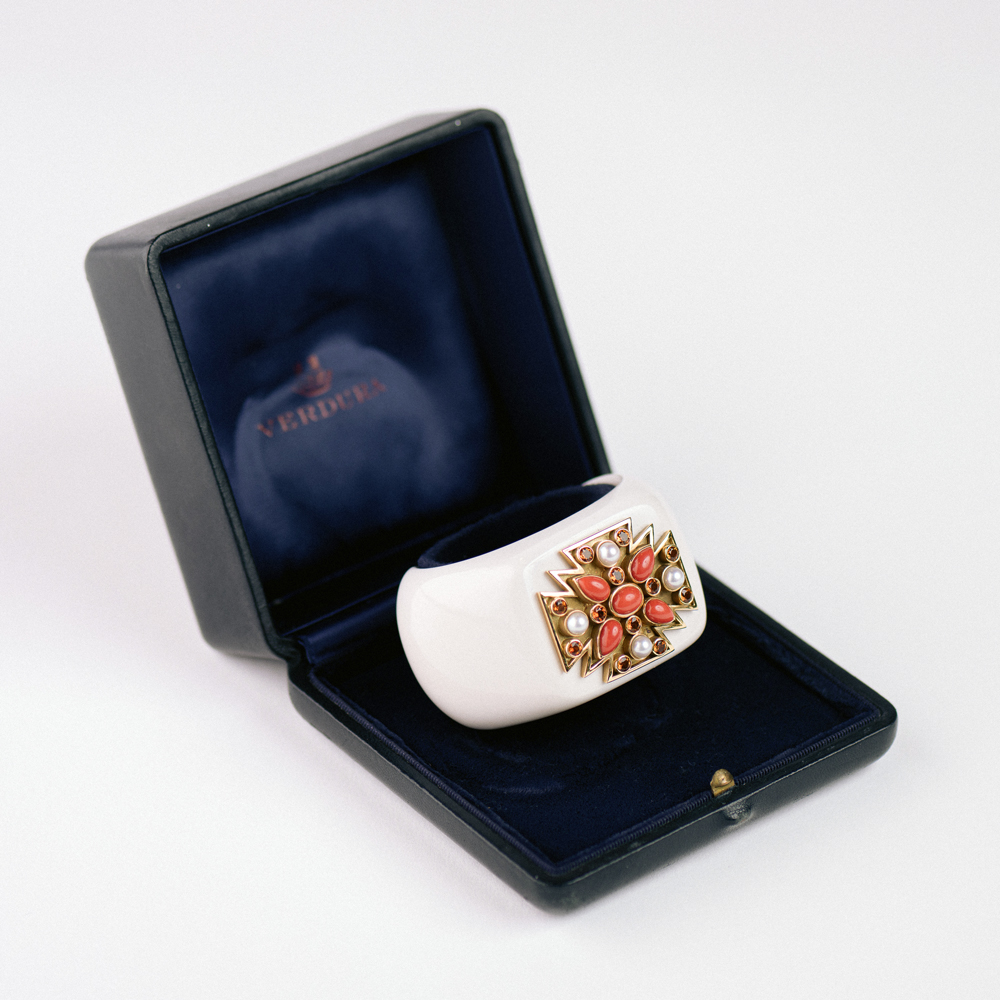
Image Courtesy of Lucas Botz Photography
Verdura spent the six years designing for Chanel and cultivating a devoted following. One of those clients was Diana Vreeland who helped popularize his Maltese Cross design and later made important introductions in the US. In 1934, he left for America and began working for esteemed jeweler of the Hollywood elite, Pal Flato. Through Flato, he designed pieces for Greta Garbo, Joan Crawford, Elsa Schiaparelli, Katharine Hepburn and Marlene Dietrich.
Verdura finally opened his own store in 1939 with the backing of Vincent Astor and his lifelong friend, Cole Porter. Buffered from WWII across the Atlantic, his business flourished. He consistently designed with an exuberant use of color, a mix of high and low materials (he once purchased a lot of stones from the American Museum of Natural History and bejeweled them), and a nod to history.
Preferring to socialize rather than advertise, the majority of Verdura’s work was intimate and personal, made with a specific client and occasion in mind. Anyone who was anyone, had money or titles, or monied and titled lovers, wanted a piece from The Duke. Fulco continued his bon vivant lifestyle to the very end, beloved by his friends and clients, creating, and leaving an unquestionably beautiful legacy.

Image Courtesy of Lucas Botz Photography
Verdura was purchased by Ward Landrigan five years after the designer’s death. Landrigan has kept the house loyal to its namesake, preferring to produce designs from Verdura’s original sketches and designs. Like the double crescent bracelet first made famous by Marjorie Merriweather Post and later Princess Diana. Or the curb-link bracelet watch designed for Greta Garbo that became one of her most favorite pieces.
His pieces endure because they were designed with and for icons. Women who other women still idolize today. They were also sturdy pieces made to be worn out in the world as women took on bigger roles outside of the home. Designs that are as wearable as they are timeless.


